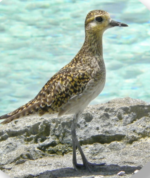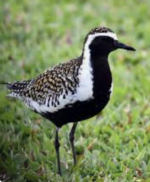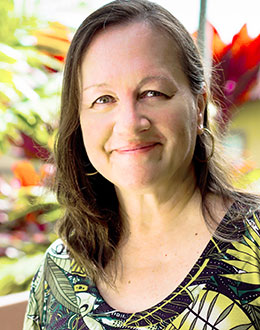If youʻre a regular at my blog, you will notice something fun — a brand new banner! Itʻs not just pretty art (by talented local artist Dru Santiago.) Itʻs got some cool Hawaiʻi (and Hawaiian) features, too.
To begin, weʻll look at just one: the three birds.
Spot them in the banner above? Cute, right? But theyʻre not just any birds.
 First there are three, for a reason. Three is my favorite number. Lots of things come in threes — three wishes, the triple crown, three parts of an atom, three-part story structure, three musketeers, junkenpo — but most important to me are my three daughters.
First there are three, for a reason. Three is my favorite number. Lots of things come in threes — three wishes, the triple crown, three parts of an atom, three-part story structure, three musketeers, junkenpo — but most important to me are my three daughters.
The birds in the banner are kōlea, Pacific golden plover, and one of my favorite birds. Every year these little migratory birds spend the summer in Alaska raising their babies and then fly thousands of miles home to Hawaiʻi in the winter.
Itʻs always a joy when they return in July or August. They come back skinny — itʻs hard work flying so many miles nonstop — and enjoy our mild winters, getting all fat and fluffy.
 Kōlea tend to return to the same Hawaiʻi neighborhoods each year, and Iʻm always happy when I see them on our Central Oʻahu street. I can tell theyʻre around when I hear their distinctive keek-KEEK!
Kōlea tend to return to the same Hawaiʻi neighborhoods each year, and Iʻm always happy when I see them on our Central Oʻahu street. I can tell theyʻre around when I hear their distinctive keek-KEEK!
When kōlea are home, they can be found everywhere — in parks, on roof tops, in parking lots, at the shore.
They leave for Alaska in April and May. We can always tell when theyʻre ready to leave because they grow a winter coat of black feathers on their bellies, like the little guy to the left up there in the banner.
The Hawaiʻi Audubon Society keeps track of the comings and goings of kōlea and encourage the public to get involved. Kōlea have long, slender legs, and because they can be found everywhere, they may have unfortunate encounters with cats or ʻio (Hawaiian hawks) or cars. The Audubon website provides guidance on helping any injured little friends you might come across.
And now a cultural note. In Hawaiʻi, being a human kolea is an insult. Think about it this way: kolea come, enjoy the weather, eat, have a good ole time, eat some more, take what they want … and then clear out, leaving their mess behind. In Hawaiian, this is mahaʻoi, and for people, not a good look. So be a better visitor (or college student or university researcher or snow bird), and get to know us while youʻre here. You might become our non-native ally, and our community definitely needs more of those.
Next time: whatʻs with that red and white blanket design in the banner? Hint: itʻs palaka!
To learn more about the kolea, visit the Kolea Count website at koleacount.org. Images from the Kolea Count website.



